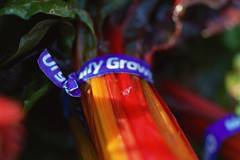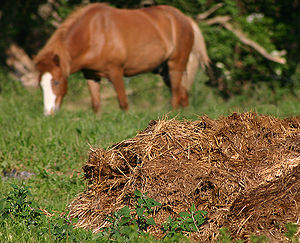 Image by thekitchendesigner.org via FlickrWell, sad to say, summer is coming to a close! For us gardeners, it is a time of both sadness and relief (especially in those areas where this summer has proven extra-hot and dry, to the point where watering adequately has become an unsustainable proposition. Luckily, here in central Ohio, we’ve finally been blessed with some MUCH-needed rain.).
Image by thekitchendesigner.org via FlickrWell, sad to say, summer is coming to a close! For us gardeners, it is a time of both sadness and relief (especially in those areas where this summer has proven extra-hot and dry, to the point where watering adequately has become an unsustainable proposition. Luckily, here in central Ohio, we’ve finally been blessed with some MUCH-needed rain.). However, those who have a long enough growing season, warm enough climate, or are lucky enough to have an enclosed garden are excitedly preparing for fall and winter gardening efforts.
Here are a few interesting notes from some such hardy souls:
Sustainable Gardening, Winter Style | Sustainable Food
A new group of sustainable gardening advocates has arrived in the mainstream: the winter gardeners.
Publish Date: 09/21/2010 6:15
http://www.justmeans.com/Sustainable-Gardening-Winter-Style/31858.html
Celebrate Fall! Harvest Time is Best for Visiting Local Farms …
Celebrate Fall! Harvest Time is Best for Visiting Local Farms. Stop! Just stop what you are doing, and put down your tools, be they gardening trowels or smart phones. It is time to take a break from the weeding, shoveling, organizing, … “ The FruitGuys supports Hoes Down as part of our commitment to sustainable agriculture and community building. We work with a number of small farms in Capay Valley as well as other small farmers around the country who feel it is part of …
Publish Date: 09/24/2010 14:17
http://fruitguys.com/almanac/2010/09/24/celebrate-fall-harvest-time-is-best-for-visiting-local-farms
October In Your Patch – Temperate Zones « Sustainable Gardening …
But the one thing that remains the same for all zones and regions is this: sustainable gardening doesn’t mean no maintenance gardening… so spend some time, pull some weeds, and enjoy your patch of paradise! …
Publish Date: 09/12/2010 22:38
http://www.sgaonline.org.au/?p=3313
Related articles on Fall and Winter Gardening:
- Annie Spiegelman: Time to Get Dirty: Autumn Chores in the Garden (huffingtonpost.com)
- A vegetable paradise in the middle of winter (teabreak.pk)
- The Fall Garden (glenns-garden.com)
- Planning for that winter vegetable crop (mysanantonio.com)















